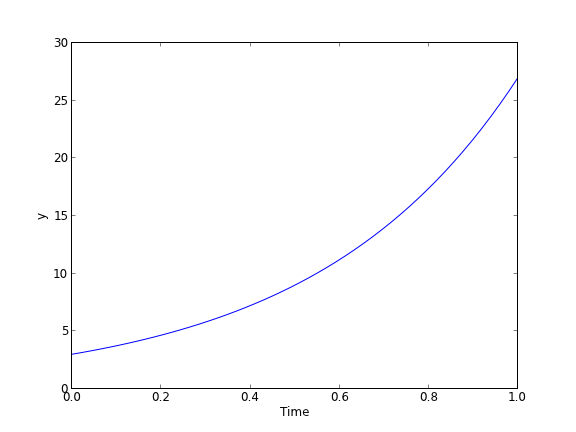Defining functions in python
Posted February 27, 2013 at 02:49 PM | categories: python | tags:
Updated March 06, 2013 at 06:28 PM
Compare what's here to the Matlab implementation.
We often need to make functions in our codes to do things.
def f(x): "return the inverse square of x" return 1.0 / x**2 print f(3) print f([4,5])
... ... >>> 0.111111111111 Traceback (most recent call last): File "<stdin>", line 1, in <module> File "<stdin>", line 3, in f TypeError: unsupported operand type(s) for ** or pow(): 'list' and 'int'
Note that functions are not automatically vectorized. That is why we see the error above. There are a few ways to achieve that. One is to “cast” the input variables to objects that support vectorized operations, such as numpy.array objects.
import numpy as np def f(x): "return the inverse square of x" x = np.array(x) return 1.0 / x**2 print f(3) print f([4,5])
>>> ... ... ... ... >>> 0.111111111111 [ 0.0625 0.04 ]
It is possible to have more than one variable.
import numpy as np def func(x, y): "return product of x and y" return x * y print func(2, 3) print func(np.array([2, 3]), np.array([3, 4]))
6 [ 6 12]
You can define “lambda” functions, which are also known as inline or anonymous functions. The syntax is lambda var:f(var). I think these are hard to read and discourage their use. Here is a typical usage where you have to define a simple function that is passed to another function, e.g. scipy.integrate.quad to perform an integral.
from scipy.integrate import quad print quad(lambda x:x**3, 0 ,2)
(4.0, 4.440892098500626e-14)
It is possible to nest functions inside of functions like this.
def wrapper(x): a = 4 def func(x, a): return a * x return func(x, a) print wrapper(4)
16
An alternative approach is to “wrap” a function, say to fix a parameter. You might do this so you can integrate the wrapped function, which depends on only a single variable, whereas the original function depends on two variables.
def func(x, a): return a * x def wrapper(x): a = 4 return func(x, a) print wrapper(4)
16
Last example, defining a function for an ode
from scipy.integrate import odeint import numpy as np import matplotlib.pyplot as plt k = 2.2 def myode(t,y): "ode defining exponential growth" return k * t y0 = 3 tspan = np.linspace(0,1) y = odeint(myode, y0, tspan) plt.plot(tspan, y) plt.xlabel('Time') plt.ylabel('y') plt.savefig('images/funcs-ode.png')

Copyright (C) 2013 by John Kitchin. See the License for information about copying.